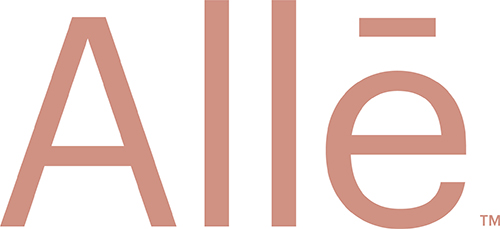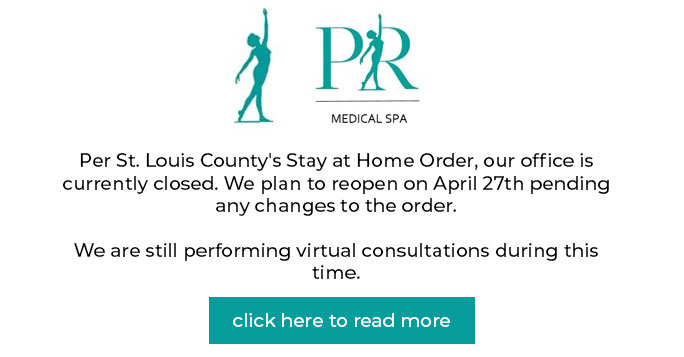Implant Based Breast Reconstruction St. Louis
Candidates for this surgery include:
- Women desiring breast reconstruction with the use of implants, and who have good soft tissue/healthy skin on the chest.
- This technique can be used immediately following mastectomy or as a delayed procedure, which can occur weeks, months, or years after the mastectomy has already been done.
Relative reasons this surgery may be delayed or not recommended:
- If the patient is actively smoking or other nicotine use (patches, gum) then, the procedure cannot be performed at the same time as the mastectomy. It must be done weeks or months later.
- We recommend the patient be nicotine free for 6-8 weeks minimum.
- Radiation therapy starting very soon or having been completed within the last year.
- Patients wanting to use of her own tissue for reconstruction i.e. autologous reconstruction

Surgery Details
The First Stage:
- Tissue expander implants are placed in the breast pocket and slowly expanded to stretch the chest skin for placement of a permanent implant to be placed later.
- The tissue expander is placed either behind the pectoralis (chest) muscle, to gain more tissue coverage over the implant, or in front of the pectoralis muscle. The decision is made in the operating room based on how the overlying skin/tissue looks following mastectomy.
- If the overlying skin/tissue appears healthy (e.g., thick with good blood supply) the implant will preferably be placed above the muscle.
- If the overlying skin/tissue is thin, or blood flow is slow, the implant may be placed below the muscle for added protection against complications.
- An implant will not be placed if the overlying skin/tissue is exceptionally thin or blood flow is poor, to avoid added risk of wound healing complications.
- Typically, some volume (saline) is placed within this implant at the time of surgery. Sometimes no volume (saline) is placed. This decision depends again the appearance of the overlying skin.
- The plastic surgery part of the surgery takes approximately 1.5 – 2 hours under general anesthesia.
- A gauze and ace wrap dressing is placed around the chest at the end of surgery.
- If the expander is placed immediately following the mastectomy, two drains are placed around the implant, which exit below your underarm area.
- Immediate reconstruction patients typically stay 1 night in the hospital for monitoring and pain control, but may go home the same day.
- Delayed reconstruction patients may not require drain tubes and do not stay overnight in the hospital.
- Follow-up in clinic occurs generally 7-10 days after leaving the hospital to have a better chance of getting your drains out. Follow up may also occur the day after surgery if no overnight stay in the hospital was needed.
- The dressing is removed and replaced with a surgical bra 1-3 days after surgery.
- Most often, a surgical bra is placed the day after your surgery.
- Drain outputs are recorded and are removed in clinic when appropriate, usually within 2 weeks.
- Drain output must be <30 ml (1 ounce) for 2 days for a drain to be removed.
- Stitches are dissolvable, and will not need to be removed.
- Expansions are performed in clinic with saline injections at an interval of your choosing, usually each week, usually beginning around 2 weeks after surgery. You may have some tightness and soreness for a day or two afterwards, but the injections in clinic are generally painless.
- When the optimal breast size is reached, as determined by you and the surgeon, the expansions are stopped.
- Expansions may be suspended if there is concern about skin or tissue quality (e.g., concerns over thin tissue, infection, etc.)
- If chemotherapy begins during this time, we temporarily stop the expansions until this has been completed.
- If radiation is required, expansions are not done until skin is healed following radiation, which usually takes around 6 weeks. Subsequent surgeries are delayed up to a year after finishing radiation.
The Second Stage:
- This can be scheduled a minimum of 4 months after your 1st stage procedure to allow for tissue readiness and scar maturation.
- This is an outpatient procedure with no overnight stay in the hospital.
- During this stage, the tissue expander implants are removed and exchanged for similarly sized permanent breast implants (either saline or silicone gel).
- Some shaping of the breasts is also done at this time to create symmetry and optimal shape of the breasts.
- There are typically no drains placed at this stage.
- A surgical bra is placed after this surgyer, but at the discretion of your surgeon, a similar breast dressing as the 1st stage reconstruction is used consisting of gauze and an ACE wrap.
- The surgery takes less than 1.5 hours on average and is done under general anesthesia.
- Suture removal and restrictions are the same as for the 1st stage.
- The first follow-up appointment is typically the day following surgery.
Direct to Implant versus Tissue Expander Reconstruction
- The decision to proceed with permanent implant placement immediately following mastectomy or tissue expander placement depends on multiple factors that should be discussed with your surgeon.
- Factors for this decision include: current breast size, target breast size after reconstruction, need for radiation, and quality of skin and soft tissue.
- The decision to proceed with direct to implant reconstruction or tissue expander based reconstruction is one that must be ultimately made in the operating room.
- Situations that may allow for direct to implant reconstruction instead of tissue expander placement include:
- Patient’s wish for smaller breast size
- Excellent skin and soft tissue quality noted in the operating room
Restrictions:
- Limit overhead arm stretches or movements especially when the elbow rises near shoulder level for 2-3 weeks following surgeries.
- No weight lifting greater than 5-10 lbs for 3-6 weeks following surgeries.
- Do not submerge your incisions under water (baths, hot tubs, pools, etc.). You may shower or sponge bath once your post-operative dressings have been removed.
- Once placed in the surgical bra, remain in it at all times unless performing hygiene. You will be provided with two bras at your first clinic postoperative visit. You will be able to purchase your own new bras typically at 6 weeks following surgery.
- No strenuous arm activity, jogging, or heavy cardio workouts for 6 weeks.
- These restrictions apply to both stages.
- Attention! The tissue expander is not MRI compatible and may set off the scanner in airports. Please make sure to keep the product card to carry with you.
Risks of surgery include:
Infection, pain, bleeding, muscle spasms, scarring, fluid collections including hematoma or seroma, skin loss, incision breakdown, loss or exposure of the implant, failure of the implant, asymmetry of reconstructed breasts, unsatisfactory appearance, capsular contracture, need for further procedures including other types of reconstruction and general risks related to anesthesia. Fortunately, serious complications are rare.
Further procedures:
Nipple/areola reconstruction is performed after you have healed from the second stage and the swelling has subsided as well as scars have faded in color.
Options include:
- 3-D tattooing – This can be done by a tattoo specialist. Dr. Hulsey does not offer this.
- 3-stage reconstruction with nipple pre-tattoo, nipple flap reconstruction, and final areolar tattoo (this option provides a projecting nipple) – Dr. Hulsey could coordinate with a local tattoo artist in order to make this possible.
Both options are performed under local anesthesia in the minor OR.
WEBSITES for further reading regarding breast reconstruction:




